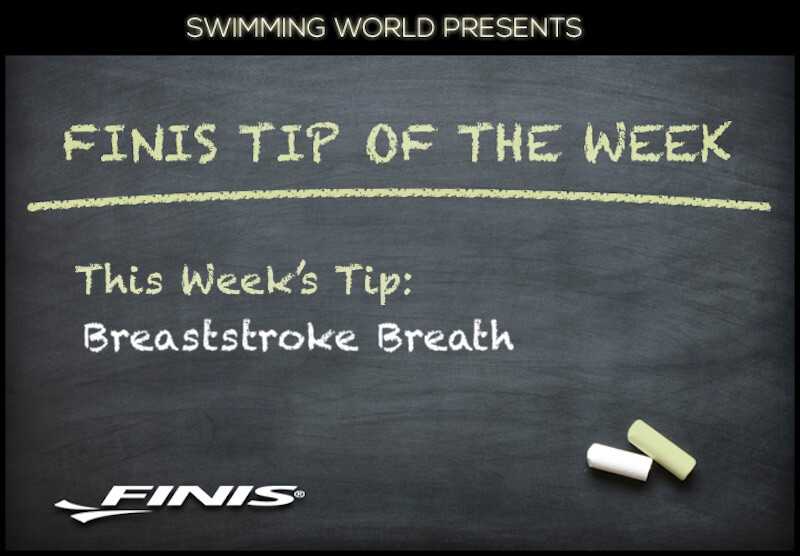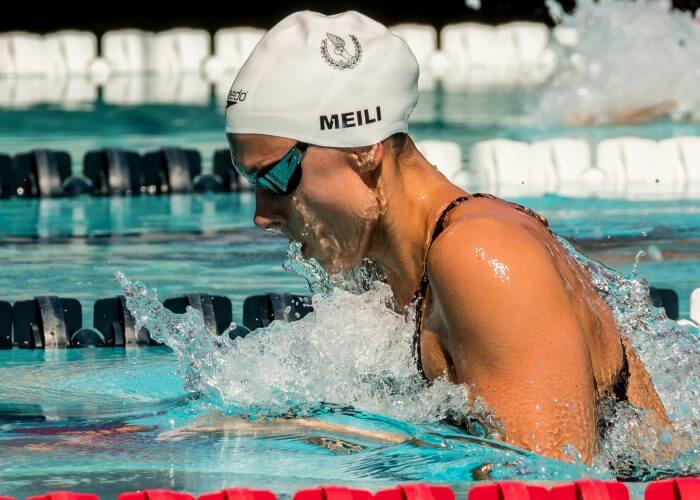FINIS Tip Of The Week: Breaststroke Breath

The Tip of the Week is sponsored by FINIS. Visit FINISswim.com for more information about our sponsor.
Welcome to the “FINIS Tip of the Week.” Swimming World will be bringing you a topic that we’ll explore with drills and concepts for you to implement with your team on a regular basis. While certain weeks may be more appropriate for specific levels of swimming (club, high school, college, or masters), each tip is meant to be flexible for your needs and inclusive for all levels of swimming.
This week’s tip will help you create a hitch-free breath in breaststroke. Breaststroke is all about minimizing resistance, and the best way to do that is to focus on the timing of your kick and pull. But somewhere in the stroke you need to breathe, and as in any stroke you want to make sure the breath is a fluid part of your stroke.
The breath in breaststroke usually involves not doing a whole lot with your head. While this is true in other strokes, it may be the most apparent in breaststroke. It is intuitive to either lift the head and look forward when your breathing, but what is most important is keeping a neutral and relaxed head position as you naturally drive your body forward and up during the recovery of the stroke.

Photo Courtesy: Peter H. Bick
Whether your eyes are looking forward or down during the breath is less important than making sure that your head position doesn’t affect your ability to get back into your body line at the end of each stroke cycle or cause you to dive down instead of forward at the end of each stroke.
If you notice excessive head movement disrupting the tempo of your stroke, take it back to basics. Grab a snorkel and work on body line breaststroke kick before gradually working your way back up to adding in the breath by doing 2 kicks/1 pull and separation drill to find that hitch-free breath on each stroke. Happy swimming!
All swimming and dryland training and instruction should be performed under the supervision of a qualified coach or instructor, and in circumstances that ensure the safety of participants.




